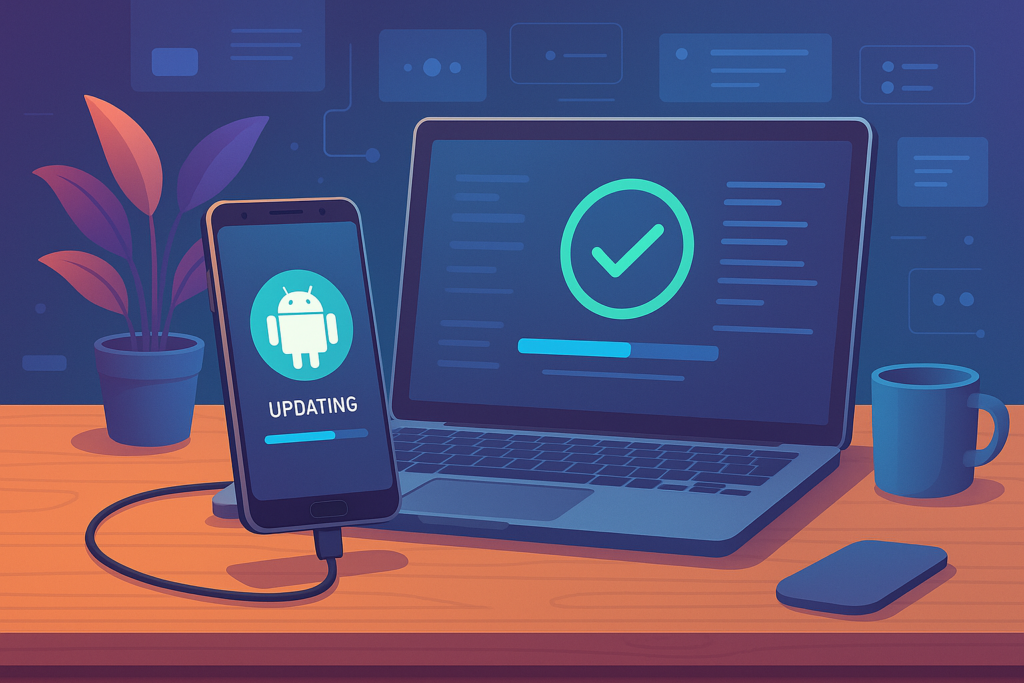The world of Android customization is huge, and one major step for any user who wants full control over their device is rooting.
For Samsung Galaxy S7 Edge (SM-G935) users, ap_root_g935.tar plays a key role. It’s a special TAR file that helps users root their phone easily without needing advanced technical knowledge.
Flashing this file with Odin, Samsung’s internal firmware flashing tool, allows users to gain superuser access, enabling deep customization of the Android system.
Rooting lets you unlock hidden features, improve performance, remove pre-installed apps you don’t like, and even flash entirely new versions of Android.
However, it also brings risks like voiding your warranty and potential device issues, which is why understanding ap_root_g935.tar properly is so important before you use it.
Components Inside ap_root_g935.tar
The ap_root_g935.tar file is much more than a simple root tool.
It contains multiple essential parts that work together to root your device safely and reliably:
- Modified Kernel: Adjusted to allow root access commands that are normally blocked by Samsung’s security systems.
- Root Management Software: You may control root rights by authorizing or prohibiting apps from utilizing root with the use of pre-installed programs like SuperSU or Magisk Manager.
- Patched System Files: These help your Android system accept and properly function with root privileges without crashing.
- Custom Recovery (optional): Sometimes a basic custom recovery is included for future modifications like flashing custom ROMs.
- Security Bypass Tweaks: These changes bypass Samsung’s software that tries to stop users from rooting.
Every component is essential for making sure the rooting process goes smoothly and without damaging your device.
Why Use ap_root_g935.tar?
Many Samsung Galaxy S7 Edge owners choose ap_root_g935.tar because it offers several clear advantages:
- Ease of Use: Flashing one simple file is much easier than unlocking the bootloader, flashing TWRP, and manually rooting.
- Saves Time: The process can take as little as 10–15 minutes.
- Safe Method: When used correctly, it has a much lower risk compared to manual rooting.
- Gain Full Administrative Control: You can access all hidden files, system settings, and advanced options.
- Customization and Optimization: Install custom ROMs, apply system-level tweaks, improve battery life, and boost performance.
- Remove Bloatware: Delete unnecessary stock apps that waste space and slow down your phone.
Essentially, ap_root_g935.tar opens up possibilities that a normal unrooted phone could never offer.
Requirements Before Using ap_root_g935.tar
Before attempting to root your device, you need to make sure everything is ready:
- Samsung Galaxy S7 Edge (SM-G935) — must be fully compatible.
- At least 70% battery charge to prevent power loss during flashing.
- Windows PC or laptop — Odin only works on Windows.
- Odin flashing tool installed — make sure you have the latest version.
- Samsung USB Drivers installed — needed so the PC can recognize the phone.
- A good USB data cable — original cables are recommended.
- Backup all your important data — rooting may erase your apps, photos, and files.
- Enable Developer Options:
- Go to Settings → About Phone → Tap “Build Number” 7 times.
- Enable OEM Unlock and USB Debugging inside Developer Options.
Without these steps, rooting might fail, or worse, damage your device.
Step-by-Step Guide to Flash ap_root_g935.tar
If you’re ready to flash ap_root_g935.tar, follow these careful steps:
Prepare Your PC and Phone
- Install Odin on your Windows computer.
- Ensure Samsung USB drivers are installed.
- Download the ap_root_g935.tar file from a trusted source only.
Enter Download Mode
- Power off your phone completely.
- hit and hold the Home, Power, and Volume Down buttons simultaneously.
- To enter Download Mode, hit Volume Up when a warning message shows.
Connect and Configure Odin
- Open Odin on your PC.
- Use the USB cord to connect the phone, and Odin should recognize it (an “Added!” message will appear).
- In Odin, click on the AP button and load the ap_root_g935.tar file.
Settings in Odin
- Only Auto Reboot and F. Reset Time should be checked.
- Make sure Re-Partition is NOT checked.
Start Flashing
- Click Start.
- Wait patiently while the file is flashed.
Your phone may reboot automatically during the process.
Finishing
- Once Odin displays a “PASS!” message, the flashing process is complete.
- The phone will reboot with root access enabled.
After Flashing ap_root_g935.tar
After your phone reboots:
- Install Root Checker from the Play Store to verify root status.
- You may see SuperSU or Magisk Manager already installed.
- Update your root manager app to the latest version.
Begin exploring root apps like:
- Titanium Backup for advanced backups.
- AdAway for system-wide ad-blocking.
- Greenify to manage battery life better.
Remember: while rooted phones offer more power, they also need more careful handling, especially when modifying system files.
Risks and Warnings
Rooting is powerful but not without danger. Some things to keep in mind:
- Warranty Voided: Samsung will not provide warranty support once the phone is rooted.
- Potential Brick: A mistake during flashing could leave the phone stuck (“bricked”) and hard to fix.
- Security Risks: Rooted devices are more vulnerable to viruses if apps with root access are misused.
- App Compatibility: Some apps, particularly banking and secure apps like Samsung Pay, may not work on rooted phones.
- No OTA Updates: Samsung system updates may fail to install after rooting.
Important Tip: Only use the most recent drivers, files from reliable sources, and official Odin.
Unrooting and Restoring the Device
If you change your mind and want to go back to an unrooted state:
- Download the official Samsung firmware for your phone model.
- Use Odin to flash the stock firmware (same method as flashing ap_root_g935.tar).
- After flashing, do a Factory Reset to remove any root traces.
- Once restored, your phone may accept OTA updates again, and warranty (in some cases) could be honored.
Restoring the device is a good option if you face major problems or wish to sell the phone.
Common Issues and Troubleshooting
Here are typical problems you might encounter, and how to fix them:
| Problem | Solution |
| Phone stuck at boot logo | Boot into Recovery Mode and wipe Cache/Dalvik Cache. If that fails, reflash. |
| Odin shows FAIL | Check your cable, drivers, and make sure your phone is in correct Download Mode. |
| Root not working properly | Update SuperSU or Magisk manually. Reflash if necessary. |
| Device not detected | Reinstall Samsung USB Drivers or try different USB port/cable. |
| System instability | Install stable versions of root apps, and avoid modifying core system apps unless necessary. |
Patience and careful steps solve most rooting issues.
Conclusion
The ap_root_g935.tar file is a simple, safe, and effective tool for rooting the Samsung Galaxy S7 Edge.
It combines everything needed — modified kernel, root manager, and system patches — into a single, easy-to-flash file.
Rooting opens up new doors for customization, power control, and removing limitations that manufacturers place on devices.
However, it also demands responsibility.
Understanding the risks, preparation, and proper steps is key to making rooting a successful and positive experience.
If you follow the instructions carefully, you can unlock the full power of your device and enjoy all the benefits rooting offers.
Also Read:
janell kochevar with element 3: Where Marketing Meets Mission-Driven Communication
Tiwzozmix458 for Businesses: Streamlining E-commerce and Data Flowv
That-bites.org foodies: A Delicious Destination for Culinary Enthusiasts
Greece Katz Martian: Culture, Art, and Unexplained Visions
Quotela.net: A Modern Destination for Daily Inspiration, Quotes, and Lifestyle Trends
#mobilecreativeorg: The Rise of Mobile-First Creativity Worldwide












